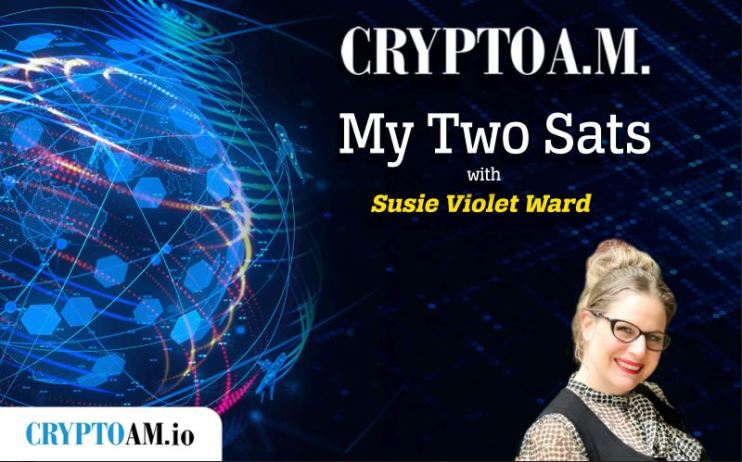Why money should have a direct and transparent link to energy

The link between energy and money is essential to any functioning economic system. Money facilitates transactions, while energy powers economic activity. Historically, money has had a direct link to energy, ensuring the integrity of our financial system.
A currency with no production cost will always warp society and have environmental consequences. Overprinting money without a direct link to energy has led to inflation, currency devaluation and war. This creates a hyper-capitalistic society hooked on cheap credit and oversupply of money, causing widespread economic instability. Sound familiar?
The consensus mechanism
Bitcoin’s uniqueness lies in its proof of work consensus mechanism. It demands a lot of energy (but this can be 100% sustainable) to solve complex maths problems, creating a direct link between energy and currency. This energy cost ensures that Bitcoin has real economic value and is not subject to the same inflationary pressures as traditional currencies. Proof-of-work (PoW) reintroduces the link between energy and money, creating a more stable and secure financial system.
Without proof-of-work, we would have proof-of-stake (PoS), replicating the flawed system we operate in today. Proof-of-stake allows users to create new coins based on how much they already own, leading to a concentration of wealth and power among a small group of users. This concentration of power goes against the very essence of Bitcoin’s decentralised nature and would ultimately lead to the same problems we see with traditional currencies.
Bitcoin’s finite supply and highly divisible units make it a secure and reliable store of value and medium of exchange, with a decade-long track record of being the ultimate champion that remains stable and climbs in value over time. While we may see volatility in its dollar or pound price, this is normal for a new asset. Interestingly, this volatility isn’t felt as much in countries with hyperinflation, which we in the UK have yet to experience.
Gold’s link to energy was vital for the integrity of money; producing just one ounce of gold can require up to 80 tons of rock, depending on the grade. This direct connection between energy and money was clear when money was backed by gold. In 1971, we divorced our money from energy and lost purchasing power, leading to housing and stock bubbles, increased work hours, and potential consequences for future generations. Luckily, in 2009, Bitcoin’s PoW reconnected money to energy, offering a fresh start free from central bank politics.
Mining as a solution
There is enough energy on our planet for our needs many times over; we just need to find suitable ways to tap into our abundant energy sources. Bitcoin can address some environmental concerns associated with traditional energy production. The mining process used to create Bitcoin requires significant amounts of energy, but this energy can come from renewable sources such as wind, solar, and hydroelectric power.
Mining allows us to tap into stranded or waste energy otherwise lost. By creating a market for renewable energy, Bitcoin is already driving the adoption of clean energy technologies and reducing our dependence on fossil fuels. The Bitcoin Mining Council reports that renewables power 59.5% of the network. It recognises that as difficulty increases, more energy will be required.
Mining activities will be economically viable only if they rely on inexpensive energy sources. This economic reality will incentivise the mining industry to shift towards becoming carbon negative, supporting governments worldwide in achieving their ESG and carbon-neutral goals.
Conclusion
Money should have a direct and transparent link to energy, like it always has historically prior to 1971 when Nixon took us off the gold standard. This link ensures its integrity and value. Bitcoin’s potential to drive the adoption of clean energy technologies further highlights its importance as a solution to our broken financial system. We can create a more stable, secure, fair, and sustainable financial system for future generations by reintroducing the link between energy and money.